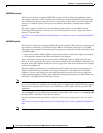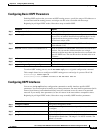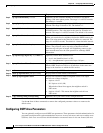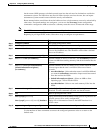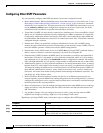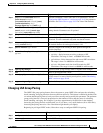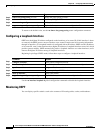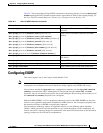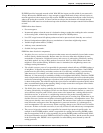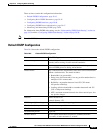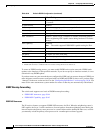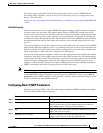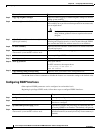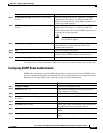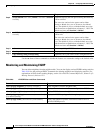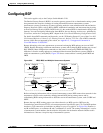
38-42
Cisco Catalyst Switch Module 3110 and 3012 for IBM BladeCenter Software Configuration Guide
OL-12189-01
Chapter 38 Configuring IP Unicast Routing
Configuring EIGRP
IP EIGRP provides increased network width. With RIP, the largest possible width of your network is
15 hops. Because the EIGRP metric is large enough to support thousands of hops, the only barrier to
network expansion is the transport-layer hop counter. EIGRP increments the transport control field only
when an IP packet has traversed 15 routers and the next hop to the destination was learned through
EIGRP. When a RIP route is used as the next hop to the destination, the transport control field increments
as usual.
EIGRP offers these features:
• Fast convergence.
• Incremental updates when the state of a destination changes rather than sending the entire contents
of the routing table, minimizing the bandwidth required for EIGRP packets.
• Less CPU usage because full update packets need not be processed each time they are received.
• Protocol-independent neighbor discovery mechanism to learn about neighboring routers.
• Variable-length subnet masks (VLSMs).
• Arbitrary route summarization.
• Scalable for large networks.
EIGRP has these four basic components:
• Neighbor discovery and recovery is the process that routers use to dynamically learn of other routers
on their directly attached networks. Routers must also discover when their neighbors become
unreachable or inoperative. Neighbor discovery and recovery is achieved by periodically sending
small hello packets. As long as hello packets are received, the Cisco IOS software learns that a
neighbor is alive and functioning. When this status is determined, the neighboring routers can
exchange routing information.
• The reliable transport protocol is responsible for guaranteed, ordered delivery of EIGRP packets to
all neighbors. It supports intermixed transmission of multicast and unicast packets. Some EIGRP
packets must be sent reliably, and others need not be. For efficiency, reliability is provided only
when necessary. For example, on a multi-access network with multicast capabilities (such as
Ethernet), it is not necessary to send hellos reliably to all neighbors individually. Therefore, EIGRP
sends a single multicast hello with an indication in the packet informing the receivers that the packet
need not be acknowledged. Other types of packets (such as updates) require acknowledgment, which
is shown in the packet. The reliable transport has a provision to send multicast packets quickly when
there are unacknowledged packets pending. Doing so helps ensure that convergence time remains
low in the presence of varying speed links.
• The DUAL finite state machine embodies the decision process for all route computations. It tracks
all routes advertised by all neighbors. DUAL uses the distance information (known as a metric) to
select efficient, loop-free paths. DUAL selects routes to be inserted into a routing table based on
feasible successors. A successor is a neighboring router used for packet forwarding that has a
least-cost path to a destination that is guaranteed not to be part of a routing loop. When there are no
feasible successors, but there are neighbors advertising the destination, a recomputation occurs. This
is the process whereby a new successor is determined. The amount of time it takes to recompute the
route affects the convergence time. Recomputation is processor-intensive; it is advantageous to
avoid recomputation if it is not necessary. When a topology change occurs, DUAL tests for feasible
successors. If there are feasible successors, it uses any it finds to avoid unnecessary recomputation.
• The protocol-dependent modules are responsible for network layer protocol-specific tasks. An
example is the IP EIGRP module, which is responsible for sending and receiving EIGRP packets
that are encapsulated in IP. It is also responsible for parsing EIGRP packets and informing DUAL
of the new information received. EIGRP uses DUAL for routing decisions, but the results are stored
in the IP routing table. EIGRP is also responsible for redistributing routes learned by other IP
routing protocols.



